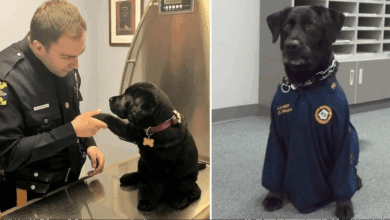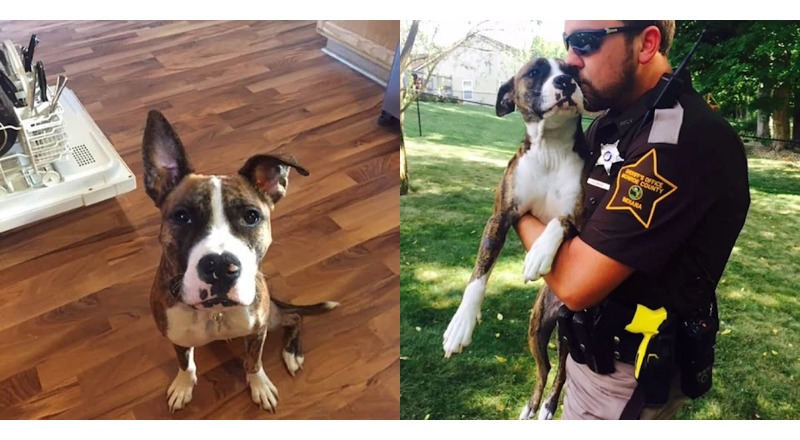
Get ready to have your mind blown because you’re about to learn some incredible facts about man’s best friend: dogs. Dogs are like a box of chocolates–you never know what you’re going to get! With over 300 breeds and countless personalities, it’s no wonder that dogs have captured the hearts of millions worldwide.
Did you know that dogs can actually sense time? They have an internal clock that helps them keep track of when their favorite activities happen, like mealtime or walks.
But that’s just the tip of the iceberg when it comes to these amazing creatures. From their incredible sense of smell to their ability to communicate with body language, there are so many fascinating aspects of dogs waiting for you to discover.
So sit back, relax, and get ready for a journey into the world of our furry friends.
Dogs Have a Sense of Time
Did you know that dogs actually have a sense of time? They can perceive how long it’s been since their last meal or when their owner is coming home! This incredible ability is due to the dogs’ perception of time being linked to their memory abilities.
Dogs are known for having impressive memories, and they use this skill to keep track of the passage of time. The way in which dogs perceive time is different from humans. While we rely on clocks and calendars, dogs rely on their senses and routines.
For example, if a dog is used to getting fed at the same time every day, they will start to feel hungry around that specific time. Similarly, if a dog has become accustomed to their owner coming home at a certain hour, they will start waiting by the door or pacing around as that hour approaches.
Dogs’ perception of time also plays an essential role in their training. When teaching new commands or tricks, trainers must repeat them frequently so that the dog’s memory can be reinforced over time. By understanding how dogs perceive time and memory, we can develop more effective training methods and strengthen our bond with these amazing animals.
Speaking of amazing abilities, did you know that dogs have an incredible sense of smell?
Without using ‘step,’ let’s explore another fascinating fact about our furry friends: Dogs have an incredible sense of smell!
Dogs Have Incredible Sense of Smell
You won’t believe how sharp a dog’s sense of smell is – it’s like they have a built-in radar system! Dogs’ olfactory abilities are 10,000 to 100,000 times better than humans’. They have up to 300 million olfactory receptors in their noses compared to the measly six million that we possess.
Dogs’ scent discrimination is also incredible. They can detect substances at concentrations as low as one part per trillion, which is equivalent to detecting a single drop of blood in an Olympic-sized swimming pool! Their noses are so sensitive that they can detect changes in the environment such as weather changes and even human emotions through subtle chemical changes in our sweat.
Because of their amazing sense of smell, dogs are used in various industries such as law enforcement, search and rescue operations, medical detection for diseases like cancer and diabetes, and even detecting explosives at airports. Their ability to sniff out specific scents has saved countless lives and helped solve numerous crimes. Truly remarkable creatures!
Speaking of remarkable abilities, did you know that dogs can see in limited color?
Dogs Can See in Limited Color
If you’re a dog owner, your furry companion sees the world in a different way than you do – they can only see shades of blue and yellow! Dogs have limited color vision due to the number of cones in their eyes.
Humans have three types of cones that allow us to see a wide range of colors, while dogs only have two types. This means that dogs cannot differentiate between red and green hues.
The psychology behind limited color vision in dogs is fascinating. As pack animals, dogs rely heavily on their sense of smell and hearing to communicate with each other. Color vision is not as important for them as it is for humans.
Dogs use their keen sense of smell and hearing to gather information about their environment, rather than relying on visual cues.
Understanding how dogs perceive the world through their eyes can help us better understand our furry companions. While they may not see colors like we do, they have incredible senses that make up for this limitation.
With their exceptional sense of smell and hearing, dogs are able to navigate the world around them with ease.
Dogs have unique nose prints just like humans have unique fingerprints! While limited color vision is an interesting fact about our canine friends, there are many other amazing facts to discover about them.
Dogs Have Unique Nose Prints
Did you know that dogs have unique nose prints, just like humans have unique fingerprints?
This means that each dog’s nose print is distinct and can be used for identification purposes in forensic investigations.
The use of nose print identification is becoming increasingly popular among law enforcement agencies and animal shelters around the world.
Nose Print Identification
Get ready to be amazed: dogs can be identified by their unique nose prints, just like humans with fingerprints! This method of canine identification has become increasingly popular in forensic science and is being used by law enforcement agencies around the world.
The patterns on a dog’s nose are as individual as a human’s fingerprints, making it an incredibly reliable way to identify them. The process of nose print identification involves taking a high-resolution image of the dog’s nose, which captures every detail of the unique pattern.
This information is then stored in a database, allowing for easy comparison with other images to confirm the identity of a particular dog. Similar to human fingerprints, this technique is fast becoming an invaluable tool for identifying lost or stolen pets and can even help solve criminal cases involving dogs.
Similar to Human Fingerprints
Now that you know about nose print identification, here’s another amazing fact about dogs: their noses are similar to human fingerprints.
Just like how each person has a unique set of ridges and patterns on their fingertips, every dog has a distinct pattern on their nose. This is because the surface of a dog’s nose is covered in ridges and bumps that create a one-of-a-kind pattern.
This unique identification can be used for various purposes, such as identifying lost or stolen dogs or reuniting them with their owners. Nose print analysis can also be helpful in comparing nose prints of different dog breeds, which can provide insight into breed-specific traits and characteristics.
As you move onto the next section, it’s important to note that this form of identification goes beyond just pet ownership – it’s even used for identification in forensics!
Used for Identification in Forensics
Imagine using nose print identification to solve a crime – that’s right, in forensics, a dog’s unique nose pattern can be used as evidence and help identify suspects. Forensic applications of canine identification are becoming increasingly popular due to the accuracy and reliability of identifying dogs based on their nose prints.
Here are some fascinating facts about this type of identification:
- A dog’s nose print is as unique as a human fingerprint.
- Unlike human fingerprints, which can be altered through injury or surgery, a dog’s nose print remains unchanged throughout its life.
- Nose prints have been used for breed identification in addition to individual animal identification.
In addition to being used for forensic purposes, breed identification through nose prints has helped animal shelters place dogs with their appropriate breed families. It’s incredible how much information can be gathered from a simple nose print!
Speaking of communication, did you know that dogs use body language to communicate? Let’s explore this topic further.
Dogs Can Communicate with Body Language
Did you know that dogs are masters of nonverbal communication, using body language to convey their emotions and intentions? Canine communication is a complex system of signals that dogs use to communicate with one another and with humans. Understanding dog behavior and recognizing these signals can help us better understand our furry friends.
Dogs use a variety of body language cues to communicate, including ear position, tail wagging, and facial expressions. For example, when a dog’s ears are pinned back against its head, it may be feeling scared or submissive. On the other hand, when a dog wags its tail rapidly while holding it high in the air, it may be feeling excited or happy.
By paying attention to these nonverbal cues, we can learn how our canine companions are feeling and respond accordingly. This can help strengthen the bond between humans and dogs and improve the overall relationship. Plus, by understanding dog behavior through their body language cues, we can also avoid misunderstandings and potential conflicts.
As fascinating as canine communication is, did you know that some dogs can also be trained to detect seizures? That’s right! Dogs have an incredible sense of smell that they can use to identify changes in a person’s body chemistry that occur before a seizure happens.
In the next section, we’ll explore this amazing fact about dogs even further.
Dogs Can Be Trained to Detect Seizures
You can train your trusty canine companion to detect seizures by using their incredible sense of smell. Dogs have been known to alert their owners or caretakers before a seizure occurs, giving them time to prepare and potentially prevent injury.
How do they do it? Here are 4 amazing facts that will blow your mind:
- Dogs can detect scent changes in the human body that occur prior to a seizure.
- They can be trained to recognize these changes and signal their owner through various cues, such as barking or nudging.
- Some dogs are even able to predict seizures before any visible symptoms appear.
- The accuracy rate for trained seizure alert dogs is around 90%, making them an incredibly valuable asset for those with epilepsy.
Seizure alerts are just one example of how dogs’ scent detection abilities can benefit humans in profound ways. In fact, research has shown that some dogs can learn over 1000 words! With this level of intelligence and adaptability, it’s no wonder why dogs continue to be man’s best friend.
Dogs Can Learn Over 1000 Words
Get ready to be amazed, because your furry friend is capable of learning over 1000 words! Canine cognition is an incredibly complex and fascinating topic, and one aspect of it that has been extensively studied is language acquisition in dogs.
While dogs obviously can’t speak human languages like we do, they’re capable of understanding a remarkable number of words. Studies have shown that some dogs can understand up to 250 words and gestures from their owners alone.
However, the most impressive example of canine language acquisition comes from a Border Collie named Chaser, who was trained by her owner to recognize over 1000 different objects by name. This includes not only toys and household items but also more abstract concepts like colors and shapes.
How do our furry friends manage to learn so many words? It’s believed that they use a combination of context clues, body language, tone of voice, and repetition to gradually associate certain sounds or symbols with specific meanings. The fact that dogs are able to do this despite lacking the same kind of sophisticated linguistic abilities as humans is truly impressive and speaks volumes about their cognitive abilities.
Conclusion
Wow, aren’t dogs amazing creatures? They have an incredible sense of smell and can communicate with body language. There’s no denying that our furry friends are truly remarkable. Did you know that dogs have a unique nose print, just like humans have fingerprints? It’s true!
But perhaps one of the most impressive things about dogs is their ability to learn and be trained. Some dogs can understand and respond to over 1000 words! And they’re not just good at fetching sticks or playing dead – they can even be trained to detect seizures in people.
Overall, it’s clear that our four-legged companions are more than just pets – they’re intelligent and complex beings with a lot of fascinating qualities. So next time you spend time with your dog, take a moment to appreciate all the amazing things they can do!
Read more:


















































